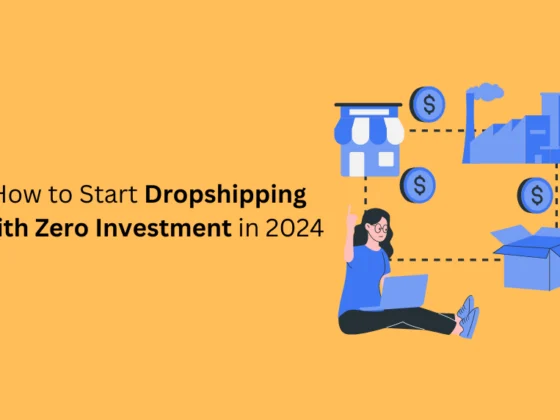One Shopify store may not be enough for everyone, so people may want to have multiple Shopify stores. But is it possible to have multiple Shopify stores?
The quick answer is yes; you can create Shopify multiple stores and manage each of them.
Multiple Shopify stores can help you grow your business and reach specific customer segments. In this blog post, we explained how to have multiple Shopify stores and how to switch between them and manage them properly.
By reading these, you can come up with your own strategies and build your multiple Shopify stores!
Let’s dive into them!
Contents:
- Can You Have Multiple Shopify Stores?
- How to Have Multiple Shopify Stores?
- Quick Tips & Key Takeaways about Having Multiple Shopify Stores
- Wrap Up
- FAQ
Can You Have Multiple Shopify Stores?
Yes, it’s possible to have multiple Shopify stores.
If you’re looking to create a new store on Shopify, you’ll need to create a new account and sign up for it. The process is very similar to signing up for an account with any other service; you can do it quickly and easily.
Whether you’re an individual or a business, having multiple Shopify stores can be a great way to expand your reach in the marketplace. The first step is deciding if it’s right for you.
If you have multiple products or services, it’s possible to have multiple Shopify stores! You’ll find that it makes sense to have a separate store for each product or service because they will have different audiences and marketing needs.
However, if you don’t have multiple suppliers, products, or services and want to keep things simple, one store could work for all of them.
In this case, you might consider creating subcategories within your store for each product type so that customers can easily find what they’re looking for.
How to Have Multiple Shopify Stores
There are a few different ways you can have multiple Shopify stores.
You can either:
- Create a new store with a separate email address.
- Use the same email address, but create a new payment processor and use that with your existing store.
- Use the same email address and payment processor, but create a second website for your second site.
It is possible to add multiple domains to a store and redirect them to the same area. But creating a new store with unique products and suppliers can be better if you want to create a new Shopify store.
Using the same email address and adding new stores can be more functional, and you can keep up with your stores quickly.
Having more than one store can help you to sell internationally or organize localized marketing campaigns. You can reach your target audience appropriately, and each store can benefit your business.
You can create a separate website for each business idea or have different storefronts for each product line. The choice is yours! Considering your target market and competitors, you can optimize all your Shopify stores to convert more.
How Many Stores Can You Have on One Shopify Account?
You can have as many stores on one Shopify account as you want, but there are a few limitations.
For example, you can’t create a store with the same name or a very similar name to an existing store. If you try to do this, Shopify will warn you that this will cause confusion for customers and prevent them from finding the correct store.
You also can’t sell the same products in two different stores. The only way around this is to create two separate websites using different domains, which may be confusing for customers who are used to searching for your products on one domain.
By not duplicating your products and content, you can have as many stores as you want on Shopify.
How to Switch Between Shopify Stores
You can manage your multiple stores that are associated with the same email address. Switching between two Shopify stores is practical with the store switcher so that you can control each store quickly. It includes the stores that you have with the same email address.
Here are a few things you can do while switching between multiple stores:
➤ You can assign various permissions to your users, and these are set in each store. By assigning various permissions to your staff and account settings, you can manage each of your stores properly.
➤ You can manage your orders and inventory by switching between multiple stores. Also, you can optimize your product pages to convert more.
➤ Since the store switcher works with external logins with GSuite and two-step authentication, you can secure your stores while navigating between them.
➤ You can display a maximum of 500 stores in the store switcher menu, but if you have more than that, the search feature can help you to find a store that you can’t find in the list.
You need to pay attention that the store switcher doesn’t work with stores that are paused, frozen, or closed. If you want to use this feature, you need to re-activate your store, and it will appear in the store switcher list.
Also, you have to verify your email address in each store to make them more secure.
Quick Tips & Key Takeaways about Having Multiple Shopify Stores
➤ If you have a few business ideas and stores don’t go hand in hand with each other, you can create multiple stores to get the most out of them.
➤ Be careful while building your new store; you don’t want to compete with your own store.
➤ Having more than one store can help you to sell your products to different buyer groups if you have different product categories. Rather than adding subcategories, building a whole new store that focuses on a specific buyer group can be significant.
➤ Managing your orders can be difficult at first since you’ll have various fulfillment options or return processes. But you can manage it by dividing your stores into different sections and planning them accordingly.
➤ In addition, by using an inventory management system, you can keep up with your stocks and inventory.
➤ Managing your stores’ inventory is an essential part of having multiple stores. You can sync inventory between two Shopify stores to avoid possible chaos.
➤ Overall, managing multiple stores’ sales data can be a struggle, but by planning ahead and using the proper tools, you can overcome possible problems properly.
➤ Providing good customer service to your customers is a must if you don’t want each of your stores to overwhelm you.
Wrap Up
We tried to explain how to have multiple stores on Shopify. By reading these tips, you can create multiple stores and manage them properly.
There are different ways to manage multiple Shopify stores, so you can decide which one can work best for your business and start applying suitable strategies.
It comes with challenges for sure, but when you plan your inventory, product data, and SEO correctly, you can get the best results in time for sure.
Apart from its challenges, it comes with many benefits, like reaching various customer segments, localizing your business, and converting more with various product types.
Apply lead generation strategies to your e-commerce business, focus on your marketing strategies and grow your stores quickly!
You can use a popup builder like Popupsmart to grow your multiple Shopify stores’ mail list, user engagement, and sales conversions.
We hope you found this article helpful and can use the tips we have mentioned after doing in-depth research.
Don’t be shy and share which strategies you find helpful while managing multiple Shopify stores or your ideas on this matter in the comments section! We love to read your comments. ????
Can You Run Multiple Shopify Stores with the Same Email Address?
Yes, you can build multiple Shopify stores using the same email address. You can manage each of your stores after logging into your Shopify admin panel. It is possible to switch between these stores and work them properly.
Why Should You Run Multiple Shopify Stores?
You can benefit from having multiple Shopify stores if you want to sell to various customer segments and reach specific audiences. Also, if you’re going to sell your products internationally, you can use this method to localize your stores according to different regions.
Building multiple stores for different price ranges can be helpful in converting more as well. For example, if you sell luxurious products at high prices, you can create another store with low-priced products that can strike a specific audience’s fancy.
How Much Does It Cost to Have Multiple Shopify Stores?
It depends on the methods you want to apply. For example, if you want to create different stores using various accounts, you need to pay for each store. A basic Shopify account costs $24 per month, so having two stores can cost you $48 per month.
You can also use Shopify Plus, which has custom plans for different business needs. Shopify Plus’ pricing plans start at $2,000 per month.
Explore “Does Shopify Take A Percentage Of Sales?” for further details about Shopify’s pricing.
What are the Challenges of Having Multiple Shopify Stores?
Although having multiple stores has its benefits, it also comes with a few challenges. For example, you can struggle while managing your product data, integration with other systems, fulfillment methods, inventory, and order processes.
Also, dealing with your multiple stores’ SEO and customer support can be challenging since you need to put the same effort into each store.
You need to be careful while managing these parts of your Shopify stores so that they don’t overlap and complicate your sales data and customer experience
If you enjoyed this, you might also enjoy these posts












